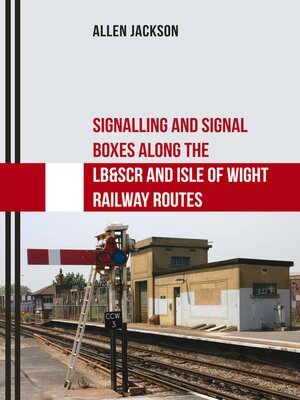Signalling and Signal Boxes Along the LB&SCR and Isle of Wight Railway Routes
ebook ∣ Signalling and Signal Boxes
By Allen Jackson

Sign up to save your library
With an OverDrive account, you can save your favorite libraries for at-a-glance information about availability. Find out more about OverDrive accounts.
Find this title in Libby, the library reading app by OverDrive.



Search for a digital library with this title
Title found at these libraries:
| Library Name | Distance |
|---|---|
| Loading... |
The Prince Regent first popularised Brighton as a pleasure destination in the eighteenth century, and the town acquired a reputation for pleasure for the masses after the coming of the railway. From these beginnings the railway grew to cover large parts of Surrey and Sussex, and went some way to establishing the railway commuter. The bowler-hatted city gent on the 07.10 to Victoria became a national stereotype. These intensively worked lines were early converts to electric traction in the 1920s and 1930s and, consequently, much of its mechanical signalling was removed then. However, some mechanical signalling remained in seaside resorts other than Brighton and on other routes not seen as a modernisation priority. Massive investment in recent years has rendered or will shortly render the remaining mechanical signalling and signal boxes redundant, but the LB&SCR will live on at the Bluebell heritage railway. The Isle of Wight railway continues in a proud independent tradition; much of it was concerned with providing a conveyor belt for holidaymakers off the ferries in the summer months. Allen Jackson uses an array of photographs to illustrate lavishly the story of signalling in the principal constituents of the Southern Rail region – focusing here on the London, Brighton & South Coast Railway and Isle of Wight routes.







